Possible Explanation Unveiled for Enigmatic Giant Explosive Craters in Siberia
Scientists are presenting a fresh hypothesis to account for the occurrence of the enormous exploding craters that appear to be appearing randomly in the Siberian permafrost.
These craters, initially observed in 2012, have been emerging in the deserted Siberian permafrost, leaving scientists perplexed. They can be substantial, with depths exceeding 160 feet and widths of up to 65 feet, forcefully propelling debris chunks hundreds of feet away.
According to certain reports, the explosions can be heard up to 60 miles away.
Now, scientists are suggesting that the explosive bursts may be caused by the seepage of hot natural gas from underground reserves.
This discovery could potentially elucidate why the craters are exclusively manifesting in specific regions of Siberia.
Helge Hellevang, the lead author of the study and a professor of environmental geosciences at the University of Oslo in Norway, explained to Business Insider that the area is renowned for its extensive underground natural gas reserves.
“When the permafrost is weakened due to climate change or atmospheric warming, these outbursts occur—solely in Siberia,” he stated.
Gas makes the hole, but it comes from deep reserves
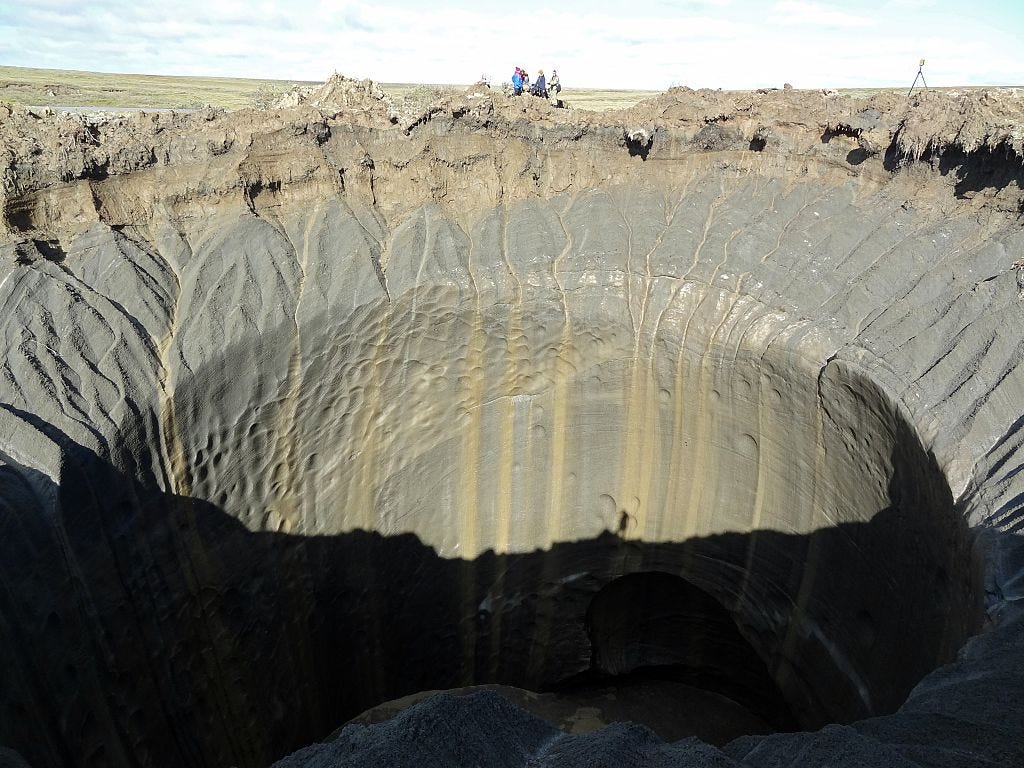
The vast amount of organic material is trapped within the permafrost, and as temperatures increase, it begins to thaw, leading to the decomposition of this organic matter. Consequently, methane is released as a result of this process. Therefore, scientists have naturally suggested that the craters are caused by the methane seeping from the permafrost itself. This hypothesis is not unfounded, as it aligns with the process known to cause the formation of thermokarsts – lakes that emerge in regions where permafrost is melting. These lakes are known to emit methane gas and can even be ignited.
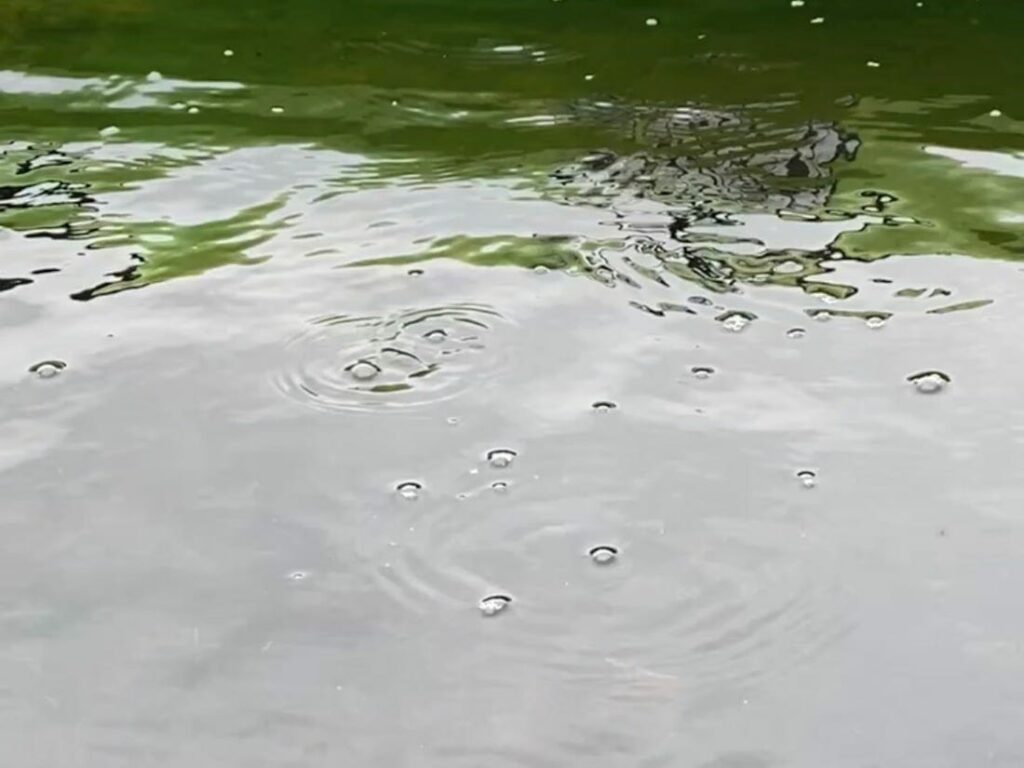
However, the reason behind the localized nature of the so-called exploding craters remains unexplained. To date, only eight of these craters have been discovered, all confined to a specific region: the Western Siberian Yamal and Gydan peninsulas in Northern Russia.
In contrast, exploding lakes can be observed in various areas where permafrost is present, including Canada.
According to Hellevang and his colleagues, there may be another mechanism at work. They propose that hot natural gas is seeping up through geological faults, accumulating beneath the frozen layer of soil, and heating the permafrost from below.
These plumes of hot gas would contribute to the thawing of the permafrost from its base, rendering it weaker and more prone to collapse.
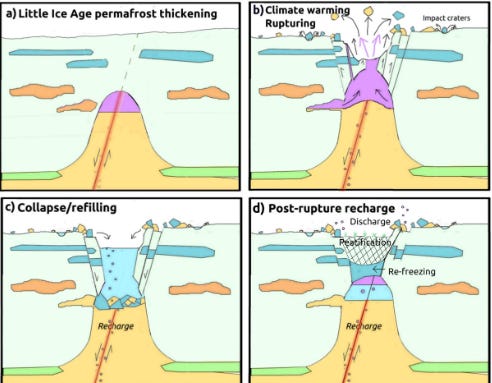
Hellenvang stated that the occurrence of this explosion is dependent on the thinness and weakness of the permafrost, which leads to its breakage. Simultaneously, rising temperatures cause the upper layer of the permafrost to melt, creating ideal conditions for the sudden release of gas. This release of gas can result in either an explosion or a “mechanical collapse” caused by the pressure of the gas. As a consequence, a crater is formed, as suggested by Hellenvang and his colleagues.
The region where these events are taking place is abundant in natural gas reserves, which aligns with the theory proposed by Hellenvang and his colleagues, as stated in the study. Hellenvang mentioned that this particular area is one of the largest petroleum provinces globally.
According to the scientist’s model, it is possible that more of these craters have been formed and subsequently disappeared as nearby water and soil filled the gaps. Due to the remote nature of this area, the true number of these craters remains unknown.
When observing the satellite image of the Yamal Peninsula, one can observe numerous round plate-like depressions, potentially indicating the presence of thermokarsts or previously formed craters. However, further investigation is required to confirm their origins.
The hypothesis regarding these phenomena was recently published on the online server EarthArXiv. It is important to note that the article has not yet undergone peer review by scientific experts.
A dangerous hypothesis for the climate crisis
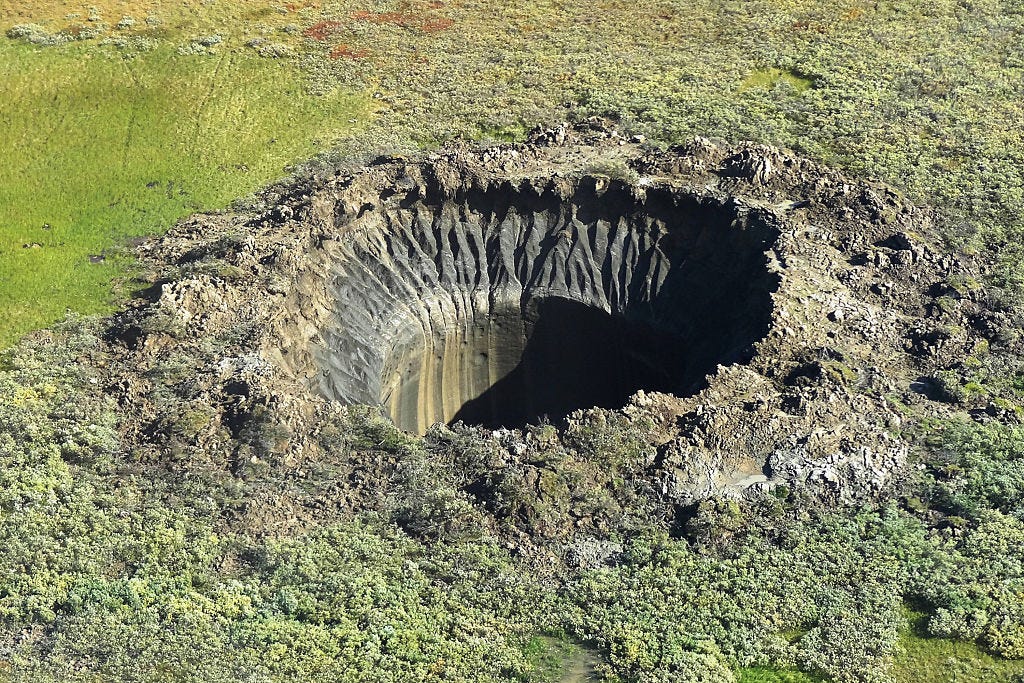
Lauren Schurmeier, an Earth scientist at the University of Hawai’i who specializes in this field, emphasized the need for additional evidence to support the notion that gas reserves are forming beneath the permafrost. While the idea holds promise, further research is required. In the event that the hypothesis is proven correct, it could have significant implications for climate models.
According to Thomas Birchall from the University Centre in Svalbard, Norway, natural gas contains high levels of methane, a potent greenhouse gas. This suggests that the craters may act as large chimneys, allowing the release of this harmful chemical into the atmosphere. Birchall warned that if this is indeed the typical way in which large accumulations fail, a substantial amount of methane could be released in a short period of time.
However, Hellenvang exercised caution and raised the possibility that this phenomenon may be limited to a specific area, resulting in minimal global impact. While there are likely substantial underground reserves of methane, it remains unclear how much of it could be released.
Hellenvang emphasized the importance of understanding the natural leakage of methane from these systems and comparing it to the amount stored within the permafrost. This would provide a more accurate assessment of the potential release due to atmospheric heating or climate change. By gaining this knowledge, a more realistic estimation of the methane budget can be established.
This article is republished from ScienceAlert under a Creative Commons license. Read the original article.
Do not forget to share your opinion with us to provide you with the best posts !



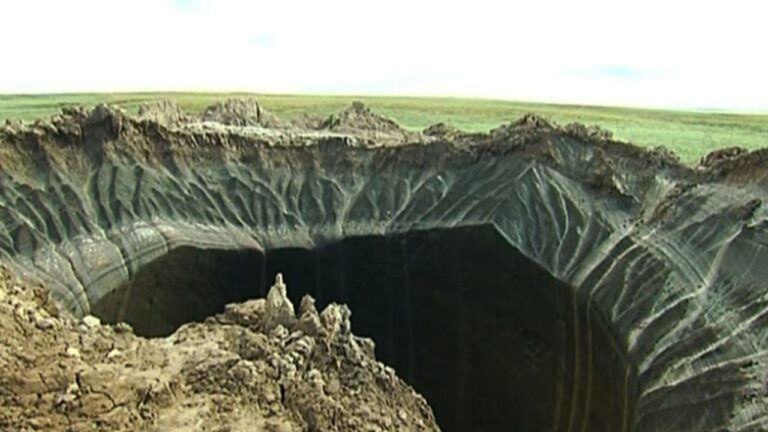
0 Comments